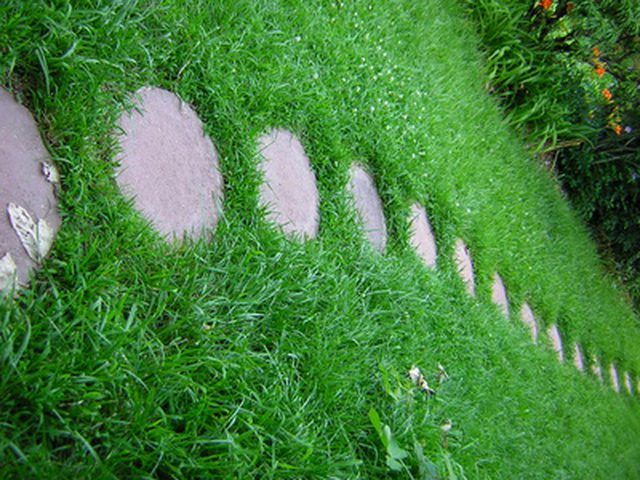Bulbs
Flower Basics
Flower Beds & Specialty Gardens
Flower Garden
Garden Furniture
Garden Gnomes
Garden Seeds
Garden Sheds
Garden Statues
Garden Tools & Supplies
Gardening Basics
Green & Organic
Groundcovers & Vines
Growing Annuals
Growing Basil
Growing Beans
Growing Berries
Growing Blueberries
Growing Cactus
Growing Corn
Growing Cotton
Growing Edibles
Growing Flowers
Growing Garlic
Growing Grapes
Growing Grass
Growing Herbs
Growing Jasmine
Growing Mint
Growing Mushrooms
Orchids
Growing Peanuts
Growing Perennials
Growing Plants
Growing Rosemary
Growing Roses
Growing Strawberries
Growing Sunflowers
Growing Thyme
Growing Tomatoes
Growing Tulips
Growing Vegetables
Herb Basics
Herb Garden
Indoor Growing
Landscaping Basics
Landscaping Patios
Landscaping Plants
Landscaping Shrubs
Landscaping Trees
Landscaping Walks & Pathways
Lawn Basics
Lawn Maintenance
Lawn Mowers
Lawn Ornaments
Lawn Planting
Lawn Tools
Outdoor Growing
Overall Landscape Planning
Pests, Weeds & Problems
Plant Basics
Rock Garden
Rose Garden
Shrubs
Soil
Specialty Gardens
Trees
Vegetable Garden
Yard Maintenance
How to Lay Paving Stones on Grass
How to Lay Paving Stones on Grass. Paving stones are an effective and attractive way to funnel traffic patterns over grassy lawn areas. You can use paving stones to avoid trampling grass and steer visitors to your garden in a specific direction to show off your garden to its best advantage. Paving stones can be installed on grass in a manner that...

Paving stones are an effective and attractive way to funnel traffic patterns over grassy lawn areas. You can use paving stones to avoid trampling grass and steer visitors to your garden in a specific direction to show off your garden to its best advantage. Paving stones can be installed on grass in a manner that keeps the paving stone in place and yet makes mowing and trim work easier.
Things You'll Need
Paving stones
Kitchen knife
Gardener's trowel
Sand or paving sand
Ruler
Tamping tool (optional)
Screed (optional)
Lay out the pathway with the paving stones by placing the stones directly on the lawn. Create a visually interesting pattern if possible.
Test your layout by walking from stone to stone with a normal gait. If you find a step is too far or if it feels like you are "mincing" too many small steps, adjust the stones so they are closer together or further apart. Walk the pathway many times and make small adjustments as necessary.
Start with the first stone in the series. Insert a sharp kitchen knife into the turf next to the stone and trace around the stone, cutting or sawing through the turf as you go. Cut all the way around the stone.
Remove the stone. Use a gardener's trowel to remove the turf in the middle of the area. You should be removing turf all the way to the soil, usually in large handfuls that expose the root bundles under the tufts of grass. Save this turf for filling bare spots in your lawn.
Tamp down the bare soil area with your feel or with a tamping tool. You want to compact the ground under the paving stone. The soil should be compacted enough that when you strike it with your fist, no significant impression is made in the dirt.
Lay down a one-inch deep bed of sand or paver's sand inside the hole. Level the sand using a homemade screed, a small board that you can drag from side to side inside the hole to level the material.
Place the paver into the cut-out area, on top of the sand. Tap the face of the paver with the end of your garden trowel to "set" the stone in the sand. Make sure the paver is level. The top surface of the paving stone should sit about three-quarters of an inch above the ground. If the top of the paving stone is too low, remove it and add more sand or paving sand to raise the stone to a higher level. If the stone is too high, try to compact it down by tamping on the stone more, or scrape off a little of the sand beneath the stone.
Repeat this operation with all the remaining stones in the run.
Fill in any gaps around the stones with more sand or loose soil.
Tips & Warnings
This ideal "setting" height will position the pavers above the grass level but you'll still be able to run a lawn mower (set at a normal cutting height of two to three inches) over the pavers without ruining your mower blades. Over time the pavers may indeed sink a little: repair this by adding fresh sand beneath the paver. You can also "erase" the pavers by pulling up the stones, removing the sand, adding more top soil to fill in the hole and reseeding with grass seed.